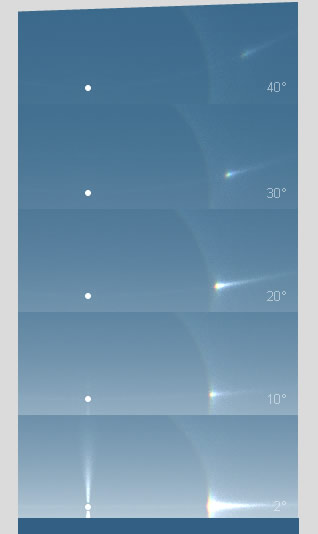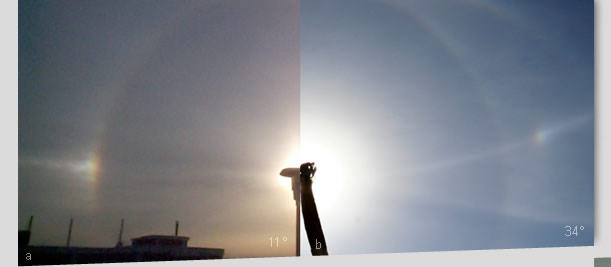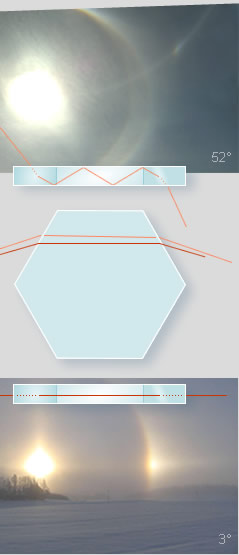 |
At 0° solar altitude, rays pass horizontally through plate crystals and parallel
to their upper and lower basal faces. Some are deviated 22°, the minimum
deviation angle for a 60° ice prism, to form the inner (sunward) edges
of low sun parhelia.
At higher sun, rays must take skewed paths, inclined to the basal faces,
to get through the crystal. No rays can enter and leave at the minimum deviation
angle and the resulting parhelia are farther from the sun. Their distance increases
as the sun climbs.
Skew rays mostly cannot pass through thin plates unless they are reflected
between their upper and lower basal faces. Internal reflections may be needed
even when the sun is only 10° high.
An even number of reflections are required. An odd number produces
a sub-parhelion below the horizon.
Sundogs are at their brightest when the sun is
low. At solar elevations much above 40° they
are difficult to discern.
a) Brian
Hartmann b) Michael Pierce
c) Jim Kirk d) Erkki
Poikolainen |
 |



